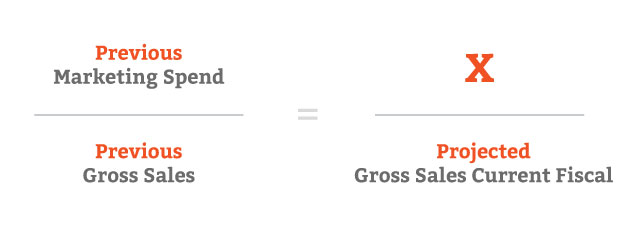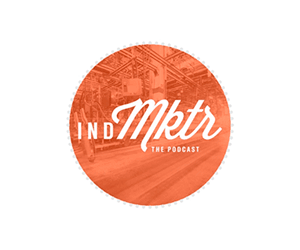You’re probably reading this because you’re looking for some benchmarks to gauge your industrial marketing budget. And that’s fine. Many marketers start to shape their ideas about strategies, tactics, and yes — budgets — based on what competitors are doing or industry data.
So let me get those statistics out of the way (I’d never want to disappoint a reader!) and then I can tell you how you should be calculating your industrial marketing budget.
Those Industrial Marketing Budget Benchmarks
The 2019 CMO Survey reports that a firm’s marketing budget averages about 9.83% of annual revenue. This average includes industries ranging from consumer packaged goods and retail to mining and transportation. The complete report data includes more specific figures for the following industrial sectors:
| Sector | Marketing as % of Annual Revenue |
| Energy | 25.00% |
| Manufacturing | 6.25% |
| Mining and Construction | 1.10% |
| Service Consultation | 6.20% |
| Transportation | 4.44% |
And there you have it! Solid benchmarks for industrial marketing budgets.
But while following these percentages certainly makes it simple — and helps build cases for respectable industrial marketing budgets — just taking a percentage of annual revenue isn’t a very insightful way to set your marketing budget. Finding relevant industry statistics is a good exercise to get the process started but it shouldn’t be the final word.
Where Does the Budgeting Process Really Begin?
Before you decide on an industrial marketing budget, you have to define what you want to accomplish and how you intend to get there. In other words, you need objectives and you need a plan to reach them.
Let’s say, for example, that you want to generate one qualified lead per business day. Looking at your historical data, you may know that it’s possible to generate qualified leads at that frequency via Google AdWords, provided you spend $100 per business day on that channel. And maybe that’s your marketing plan.
But chances are you’ll have several objectives. For example, we all know that the industrial buying cycle is long. In other words, that qualified lead generated by your AdWords campaign probably isn’t going to buy something from you then and there — if at all. It might take six months, a year, or even two years to convince them — or to lose them to a competitor.
So how do you engage a qualified prospect during that span and accelerate your sales by, say, 20 percent? Email marketing and relevant content might do the trick. Ongoing communications like this are more of an institutional commitment than an ad campaign and require estimating costs for multiple facets, such as an email marketing platform and the creation of the emails and other content.
Some might get impatient and object that this is going down the proverbial rabbit hole, but this shift in perspective is important because it turns the idea of “marketing spend” on its head. If you have a plan designed to accomplish key objectives, you can frame your industrial marketing budget as an investment to your budget stakeholders. Your task of persuading those who hold the purse strings becomes a lot easier. You’ll be able to project a return on investment for them by saying, “I intend to achieve the following objectives via the following means, which will require a financial commitment of $X” vs. “Hey, can you give me $X? That’s 9.83% of our annual revenue, which is what a B2B company like ours generally spends on marketing.”
So: Don’t start budgeting with a budget number. Rather, start with goals and objectives and think through what you’ll need to achieve them.
Quantifying Your Industrial Marketing Activities
Once you have some semblance of a marketing plan that stipulates audiences, key channels, campaigns, necessary tools, and mandatory commitments, you can start assigning dollar amounts to each “bucket.”
To continue our example above, if qualified AdWords leads “cost” $100 on average and you want to generate one per business day, we’re looking at an annual budget of roughly $26,000 (assuming 260 business days in our hypothetical year).
Estimating the cost of the email platform will vary by vendor, which typically scale according to functionality (e.g., do you need automated email sends?) and database size. The cost of the labor required to produce, distribute, and optimize the content distributed through the platform can be done by projecting how many hours all the tasks will take and multiplying that count by an agreed-upon labor rate. Once you have all those line items fleshed out, add them up to create a realistic estimate.
If you find that your final number is too high, you can start to look for places to cut hard costs (e.g., maybe AdWords isn’t the most cost-effective means for generating leads; or maybe a less-expensive email marketing platform exists that will support everything you want to do) or find efficiencies (e.g., maybe you consider ways to version and repackage content).
Is Setting an Industrial Marketing Budget Really That Labor Intensive?
The short answer is: Yes. If you are going to do it right, that’s the way you should do it. However, most industrial companies have the same core objective: They want to grow sales. And that’s led many to a simple formula called the Marketing Budget Ratio (MBR), which is essentially your marketing budget divided by your gross sales.
The thing is, though, in order to calculate MBR, you need to have two historical data points on hand:
- Your marketing spend for the last year(s)
- Your gross sales for the last year(s)
Then, assuming you have a sales goal for the current fiscal year, it’s simple math:

Cross multiply and divide to solve for “X” and that’s your ballpark number for the current fiscal year, which is much better than just going by industry benchmarks as it’s based on historical data specific to your company.
Also, if you know these high-level data points from previous years, you probably have access to more granular, campaign- or channel-specific data related to you prior marketing performance. Use that history to build a solid plan and set an industrial marketing budget that will really deliver a return on investment!
For more about building a solid industrial marketing budget, check out the 2021 Industrial Marketing Budget Guide.




